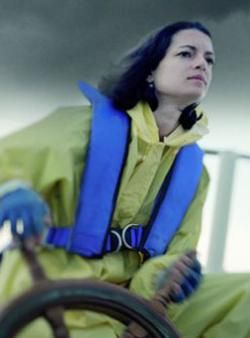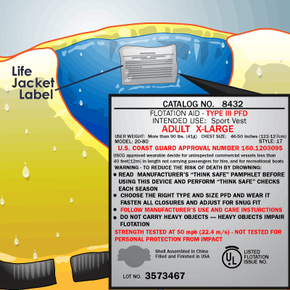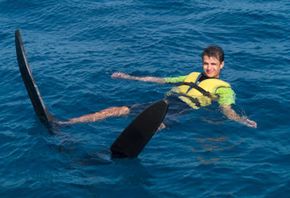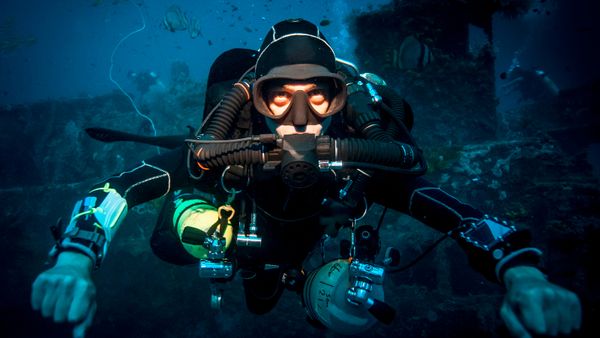If you were to fall off a boat, it's unlikely that your first thoughts would involve the ancient Greek philosopher Archimedes. However, Archimedes' principle helps to explain what is happening to your submerged body. As an object is submerged in water, it moves, or displaces, water according to how much it weighs. Archimedes found that the water will push upward against the object with a force equal to the weight of water that is displaced.
How much water is displaced is determined by the density of the object. Density is the measure of how much mass is in an object, related to its volume. A bowling ball and a beach ball may have the same volume, but the bowling ball weighs much more, and is much denser, than the beach ball. Meanwhile, a block of solid steel and a steel ship may both be heavy, but the steel ship has a greater volume of steel (in addition to weightless air). It displaces enough water to match its own mass, so it floats.
When that solid, heavy bowling ball is dropped in water, the water pushes up on it with a force equal to the weight of water it displaced. The ball weighs more than the amount of water it displaced and will sink. The beach ball, meanwhile, displaces very little water, and the air inside is much lighter than the weight of the water that was displaced. The buoyant force from below keeps the beach ball afloat. If you were to try to push the beach ball down into the water, the push back that you would feel is the buoyant force of the water at work. Objects that displace an amount of liquid equal to their weight will float because they receive that upward push from the water. You can read more about buoyant forces in How Hot Air Balloons Work.
Buoyancy is the upward force we need from the water to stay afloat, and it's measured by weight. Buoyant forces are why we feel so much lighter when we're in a swimming pool or bathtub. Our bodies are mostly water, so a person's density is fairly close to that of water. Because of this, an average person needs only about seven to 12 pounds of additional buoyancy to float [source: Personal Flotation Device Manufacturers Association]. A life jacket provides this extra lift.
The material inside of a life jacket, which we'll investigate in the next section, traps air when the jacket is submerged. The trapped air weighs much less than the weight of the water it displaces, so the water pushes up harder than the life jacket pushes down, allowing the life jacket to remain buoyant and float. This buoyancy is strong enough to hold up additional weight without sinking.
Life jackets are measured according to how much additional weight they can support. Jackets for adults provide, at a minimum, buoyancies ranging from 15.5 pounds to 22 pounds (7 kilograms to 10 kilograms) [source: U.S. Coast Guard]. Since the average person in water needs about seven to 12 additional pounds of buoyancy to float, a life jacket does not have to support the entire physical weight of a human body. Instead, it supports those seven to 12 pounds, with a few pounds to spare. You could attach an item that weighs less than the minimum buoyancy provided by that life jacket, and the jacket would hold that item without sinking.
But what exactly in a life jacket is trapping the air? We'll take a look at how life jackets are made on the next page.







